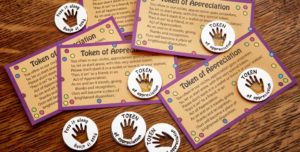Criticism, Feedback and the Power of Praise
A good leader knows how to give feedback and praise. Just ask Kim Scott, whose TED Talk on Radical Candor, transformed our understanding of what it means to be a good boss. Certainly, criticism may be hard to take, but withholding feedback doesn’t do anyone any favors. Scott’s “radical candor” encourages honesty, but doing it well takes practice.
Feedback vs. Criticism
Coaches, trainers, managers and leaders need to find that sweet spot — the middle ground where they share important feedback but also preserve the recipient’s self-confidence. The “Feedback sandwich” (say something positive, then critical, then positive) is not necessarily a magic bullet. Use scenarios and role-plays to practice giving feedback.
Praise
If the only feedback you ever give is criticism, your team will quickly know to equate “feedback” with “criticism.” However, positive feedback is also critical for success. Several studies have been conducted over the years, which focus on the benefits of praise. In 2004, Chalk & Bizo found that levels of on-task behavior were significantly greater when praise was given for a specific behavior, rather than general praise. In a 2005 study, Keller, Brady & Taylor found that praise increased student motivation, accuracy of responding & task persistence. So praise is not just about being nice and balancing out your criticism. Praise is essential, in and of itself.
To get the most mileage out of giving positive feedback, consider these 7 tips:
- Recognize specific behaviors – keep it credible and meaningful by identifying details that you noticed.
- Share praise publicly – extend the praise by allowing others to overhear your recognition. They too, can then reiterate the accolades and be inspired to act in praiseworthy ways.
- Offer praise frequently – don’t save praise for a momentous occasion. Instead, recognize small successes, as well as efforts to grow and change.
- Praise people behind their back – some suggest you should tell someone else that a person did well. They will inevitably hear about it through the grapevine and the praise will be perceived as more believable. Personally, I prefer the direct method.
- Make sure the praise is meaningful – don’t give praise for something silly or too effortless or the praise won’t be valued by the recipient.
- Create a culture of appreciation – encourage peers, siblings, colleagues and friends to give one another positive feedback.
- Keep it simple – don’t create a cumbersome process for recognition. All you really need is a kind word, a quick note or email.
Great tools for sharing praise
 Positive reinforcement does not require a huge amount of time or a large budget. Try some of these playful and easy-to-implement resources:
Positive reinforcement does not require a huge amount of time or a large budget. Try some of these playful and easy-to-implement resources:
- Use your words – I remember telling my toddlers to “use their words.” The same goes for us grown ups! Take the time to say “Thank you!”
- Tokens of Appreciation – Share a token that says “Token of Appreciation – pass it along!” The small coin will be a reminder of the appreciated actions and the importance of spreading the sentiment!
- Kudos Notes – try a memo note, where all you have to do it check a box and sign your name!
- Mini Kudos Notes – leave a little sticky-note that just says “thanks”
The element of surprise
If a teacher was concerned about a student’s progress, he or she would not wait until after the final exam to discuss those observations. Similarly, recipients of feedback, especially “constructive criticism,” should be made aware of issues rapidly, as they arise, and not be surprised months later at a performance review. Positive feedback, on the other hand, is always a welcome surprise and should be given without restraint. For more recognition tools, visit Trainers Warehouse (or our friends at Baudville). You might also want to take a look at Pinterest for tons of do-it-yourself recognition ideas. This link will take you to our collection of favorite “candy kudos” ideas.
As a final note, let me compliment YOU on reading through to the end of this post!
View also: 10 Easy Appreciation Exercises


1 thought on “Criticism, Feedback and the Power of Praise”